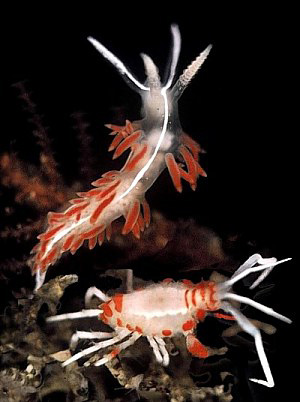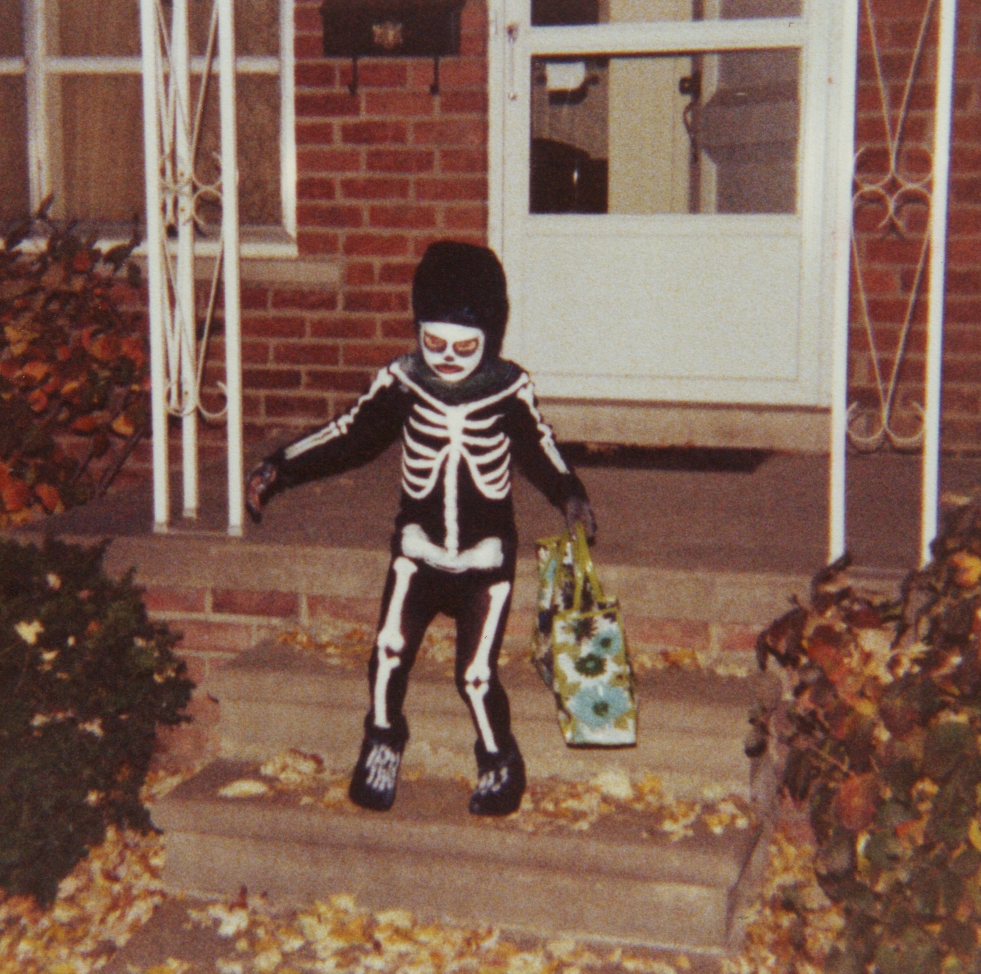With Halloween fast approaching, parents of the Western world are once again preparing to send their children out into the night, armed with nothing more than a supermarket-bought costume and a plastic bag, to beg strangers for confectionery. Costumed children generally expect a free treat from the neighbourhood's houses, under the caveat that unobliging houses may be subject to a 'trick', which can range from toilet paper being strewn over the garden to eggs being thrown at the front door.

While this may baffle the rest of the more responsible world, trick-or-treating is one of the few remaining celebrated Halloween traditions.This suggests that children must stand something to benefit from disguising themselves as vampires, ghosts, Piers Morgan, and the other general evils of the world. The appeal of free treats may sound like enough, while the use of costumes provides a useful alibi in the event of any inflicted property damage. However, humans are not the only animals to don disguises and mimic others; the natural world has imposters of its very own.
In the animal kingdom creatures mimic patterns or colouring of dangerous or venomous creatures for a simple reason - to avoid being killed and/ or eaten. Mimics generally fall into one of two categories, Müllerian mimics and Batesian mimics.
Müllerian mimicry
Müllerian mimics are venomous or poisonous animals that all evolve a similar appearance to make sure they are not eaten or bothered by other animals. By evolving a common warning colouring, other animals learn that the creatures displaying this pattern are unpleasant or toxic. This process happens a lot quicker when dangerous animals have a shared warning pattern, as the strength of the signal is stronger due to the signal being encountered in the wild more frequently. This is an example of Positive Frequency Dependence, whereby a common trait is selected for because the trait becomes more advantageous the more common it is. Heliconius butterflies represent an example of Müllerian mimicry in the wild, with a dozen inedible species displaying similar warning colours. Because there are so many species involved, the likelihood of a predator eating one of the butterflies increases, and so the predator will quickly learn to avoid all the species that share that appearance. Even though this process involves an individual being eaten, the shared genes responsible for the warning colours gain a selective advantage due to reduced predation in the future.
![]()
Inedible Heliconius butterflies evolved a shared colouring pattern to increase the strength of the warning signal. An unfortunate predator that attempts to eat one of these butterflies will swiftly learn to avoid similar looking butterflies in the future.
Batesian Mimicry
On the other side of the fence, Batesian mimics are animals that themselves are relatively harmless; but copy the appearance of a dangerous animal. By doing this, these imposters are able to freeload off of the avoidance afforded to the dangerous animal. A common example would be harmless hoverflies which masquerade as painful wasps. A stark difference between Batesian and Müllerian mimics is that rather than benefiting from being common, Batesian mimics must remain rare. This is because if they were to become common, the avoidance signal of the dangerous animal would become weaker, as predators would be more likely to encounter a harmless mimic rather than a dangerous muse. The Milk Snake, Lampropeltis triangulum, is a harmless snake that impersonates venomous Coral Snakes, which has poison potent enough to kill humans. The two share a red, black and yellow banding pattern that varies only in the order of the bands. However, this example represents a snake mimicking a more dangerous snake, in trick-or-treating terms the equivalent would be for a child to dress as a more dangerous child, such as the local bully or Dennis the Menace (British not American). There are however examples where harmless animals are capable of disguising themselves as radically different dangerous animals. Hemeroplanes triptolemus is a moth whose caterpillar is able to inflate its rear end to copy the appearance of a snake, complete with eye spots. The caterpillar will even go so far as to innocuously lash out at potential predators. Another example comes in the form of the crafty crustacean, Podocerus cristatus, which is able to imitate the colouring and tentacles of the inedible sea slug, Flabellina trillineata.
 |  |
|---|
Batesian mimics evolve startlingly accurate imitations of dangerous or inedible animals to avoid predation or hassle from other animals. The crustacean P. cristatus (left) bears a striking similarity to the inedible sea slug F. trillineata. The moth caterpillar H. triptolemus (left) has evolved an amazing snake disguise on its derriere.
Trick or treat?
So which form of mimicry best fits trick-or-treaters? On the surface, Batesian mimicry seems the obvious choice; children are after all relatively harmless yet disguise themselves as dangerous fictional beasts that are capable of biting, scratching and all-round spookiness. However, any homeowner that has turned away trick-or-treaters will swiftly learn the lesson that they are not to be refused, following a probable egging, teepeeing and general vandalism that is symbolic of a "trick". This could be tenuously compared to a predator eating an inedible Müllerian mimic and learning to avoid them in the future. Therefore in a way, trick-or-treaters are comparable to Müllerian mimics, with children in costumes representing dangerous house-callers that should probably be given what they want, whilst the requests of regular children can be happily ignored.
 |
|
|---|
Harmless Batesian mimic, or Müllerian mimic displaying its warning signals? Whilst this child (left) may seem innocent, the consequences of turning trick-or-treaters away empty-handed can be severe... (right).
Whichever way you look at it, mimicry and imitation are rife throughout the animal kingdom. Whilst the disguises adopted by trick-or-treaters are fairly incomparable to the evolutionary wonders of nature, they do act to benefit the wearers. The acquisition of food is after all one of the strongest evolutionary driving forces in nature, so it's no surprise that trick-or-treating is one of the few remnants of an Autumnal celebration whose origins are lost in a historical collage of Christianity and Paganism. Because of this, we can expect children to continue to trick-or-treat long into the future, much to the dismay of homeowners and the elderly. And on that note, Happy Halloween!
James has a blog satirising the human world through dissecting animal antics.
Read more at
The Animail











Comments
Yet, the tradition of
Yet, the tradition of dressing up in costume comes from the thought that on Halloween, the veil between the living and the dead is the thinnest, and a costume is worn to keep the evil demons and ghosts from possessing you. Trick or treating started because the kids, who now look like ghosts and cannot be possessed, can also take the actual ghosts' treats. Treats are given out to keep the house from being taken over by the ghoulies. Dressing a house up in decor and carving jack-o-lanterns gives the impression that the house has already been possessed, so the real ghosts move on. A very interesting history that could have been expanded upon here.
Add a comment